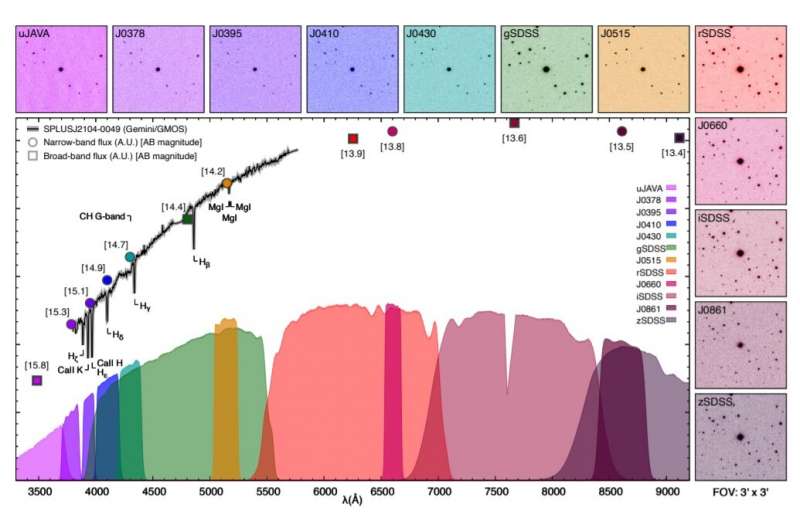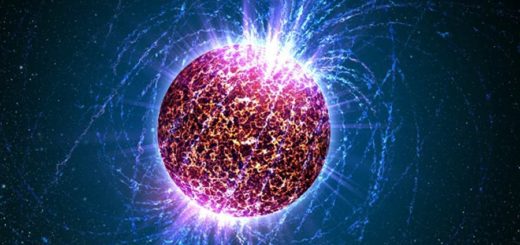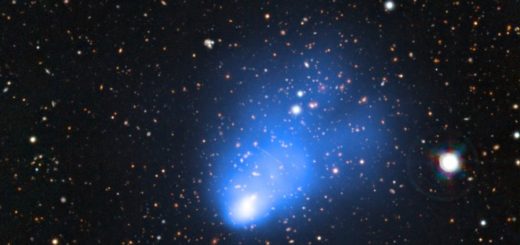Reseachers detect a new ultra-metal-poor star

Astronomers report the discovery of a new ultra-metal-poor star as part of the Southern Photometric Local Universe Survey (S-PLUS). The newly found star, designated SPLUS J210428.01−004934.2, turns out to have the lowest carbon abundance among the ultra-metal-poor stars so far detected. The finding is detailed in a paper published May 10 on the arXiv pre-print repository.
Ultra-metal-poor (UMP) stars, with iron abundances [Fe/H] below –4, are extremely rare, as only 34 such objects have been discovered to date. Astronomers are interested in expanding the still short list of metal-poor stars, as these objects have the potential to improve our knowledge of the chemical evolution of the universe. The early evolution of the universe is believed to be dependent on the properties of the first generation of metal-free stars.
Now, a group of astronomers led by Vinicius M. Placco of the NOIRLab (National Optical-Infrared Astronomy Research Laboratory) reports the newest addition to the shortlist of known UMPs—SPLUS J210428.01−004934.2 (or SPLUS J2104−0049 for short). The star was identified by narrow-band S-PLUS photometry and confirmed by medium- and high-resolution spectroscopy.
“We report on the discovery of SPLUS J210428.01−004934.2, an ultra-metal-poor (UMP) star first identified from the narrow-band photometry of the Southern Photometric Local Universe Survey (S-PLUS) Data Release 1, in the SDSS Stripe 82 region. Follow-up medium- and high-resolution spectroscopy (with Gemini South and Magellan-Clay, respectively) confirmed the effectiveness of the search for low-metallicity stars using the S-PLUS narrow-band photometry,” the researchers wrote in the paper.
SPLUS J2104−0049 is located some 16,000 light years away from the Earth and has a mass of about 0.8 solar masses. The star has a metallicity at a level of -4.03 and its effective temperature is estimated to be around 5,000 K.
The observations found that SPLUS J2104−0049 has carbon abundance of approximately 4.34. This is the lowest carbon abundance ever measured for a UMP star and sheds more light on the origin of this star as the results suggest that SPLUS J2104−0049 may be a second generation star. The astronomers suppose that it could have formed in a gas cloud polluted by the byproducts of the evolution of a progenitor about 30 times more massive than the sun with an explosion energy of one sexdecillion erg.
The researchers noted that further investigation of SPLUS J2104−0049 is needed to confirm the assumed origin and nature of this star. They added that their findings prove that surveys like SPLUS could deliver more discoveries of ultra-metal-poor stars.
“This discovery opens the possibility of finding additional UMP stars directly from narrow-band photometric surveys, a potentially powerful method to help complete the inventory of such peculiar objects in our Galaxy,” the authors of the paper concluded.



 Creators of mankind
Creators of mankind Description of “Tall white aliens”
Description of “Tall white aliens” Where they came from?
Where they came from? About hostile civilizations
About hostile civilizations The war for the Earth
The war for the Earth “Tall white aliens” about eternal life
“Tall white aliens” about eternal life Video: “Nordic aliens”
Video: “Nordic aliens” Aliens
Aliens Alien encounters
Alien encounters The aliens base
The aliens base UFO
UFO Technology UFO
Technology UFO Underground civilization
Underground civilization Ancient alien artifacts
Ancient alien artifacts Military and UFO
Military and UFO Mysteries and hypotheses
Mysteries and hypotheses Scientific facts
Scientific facts


















